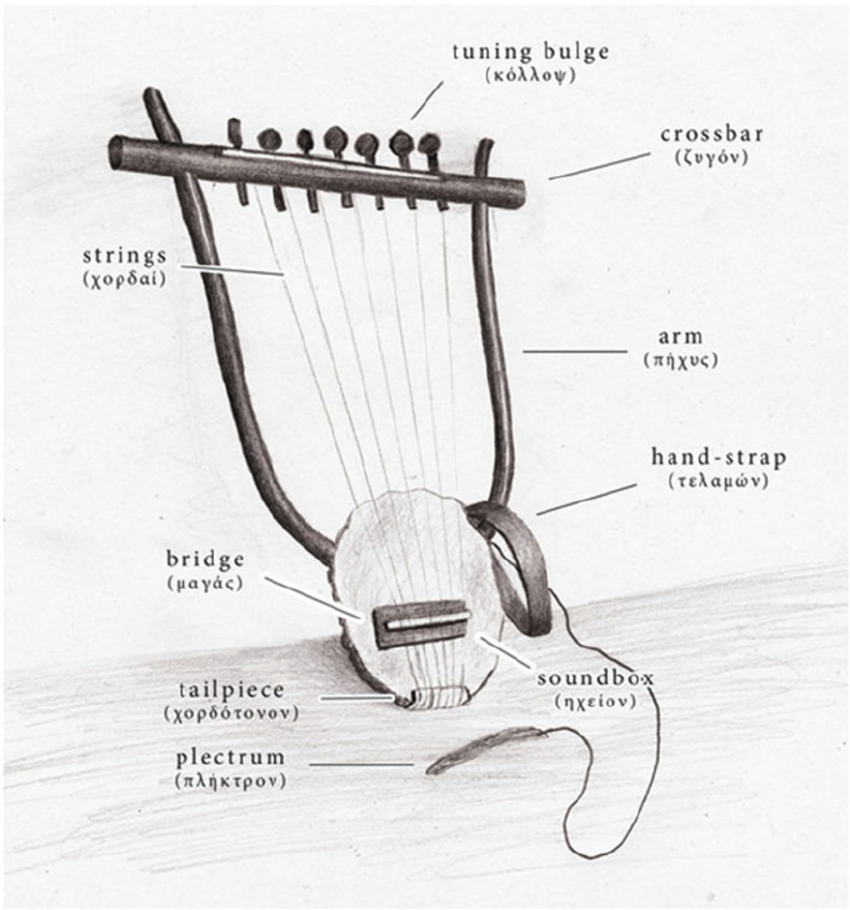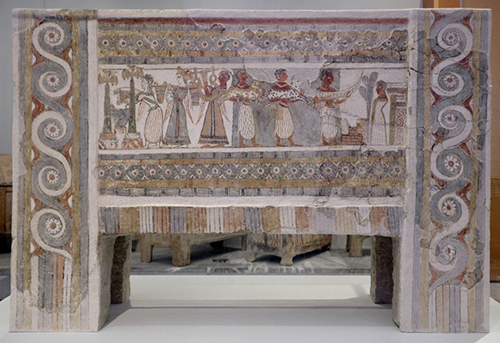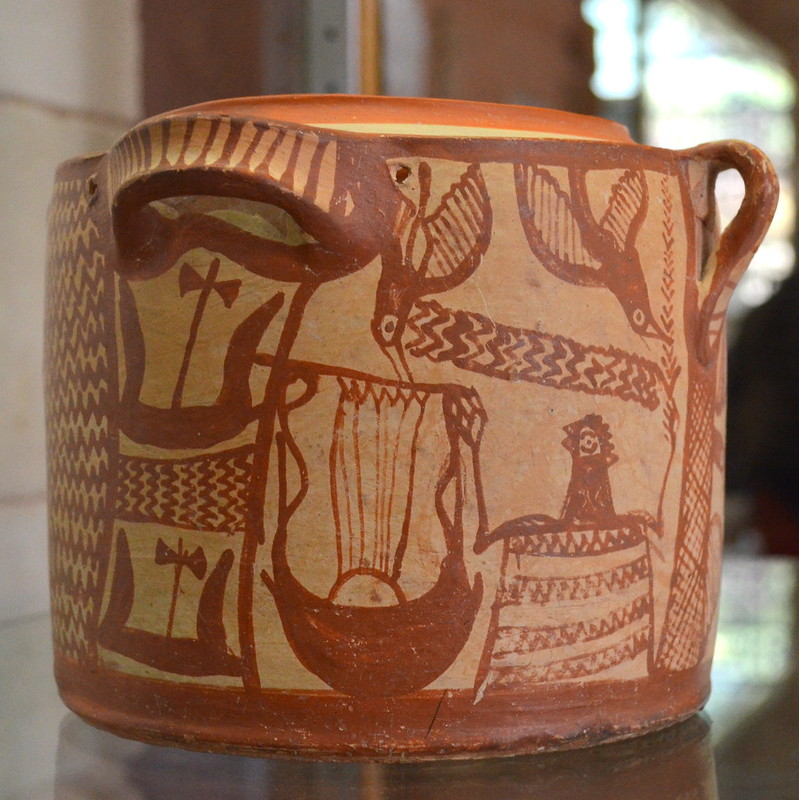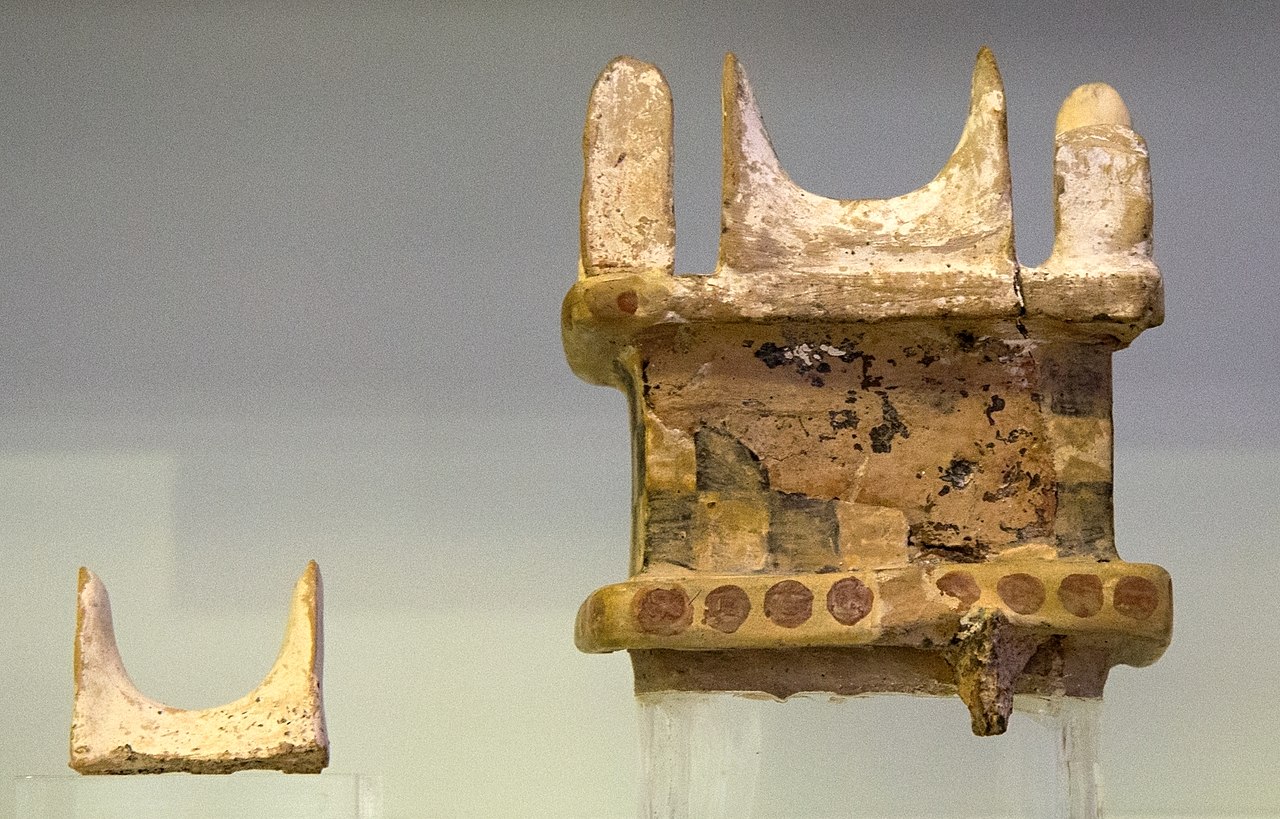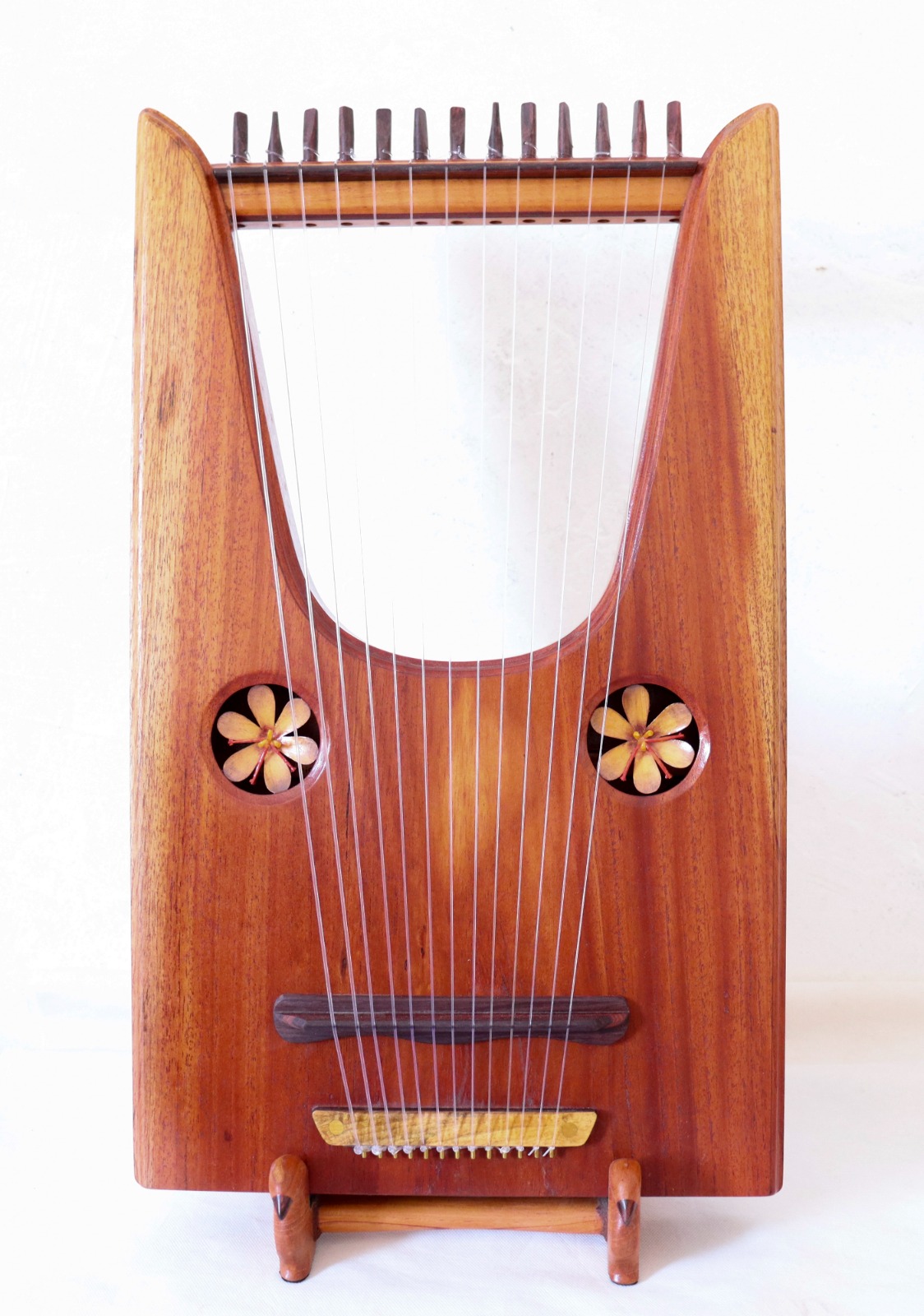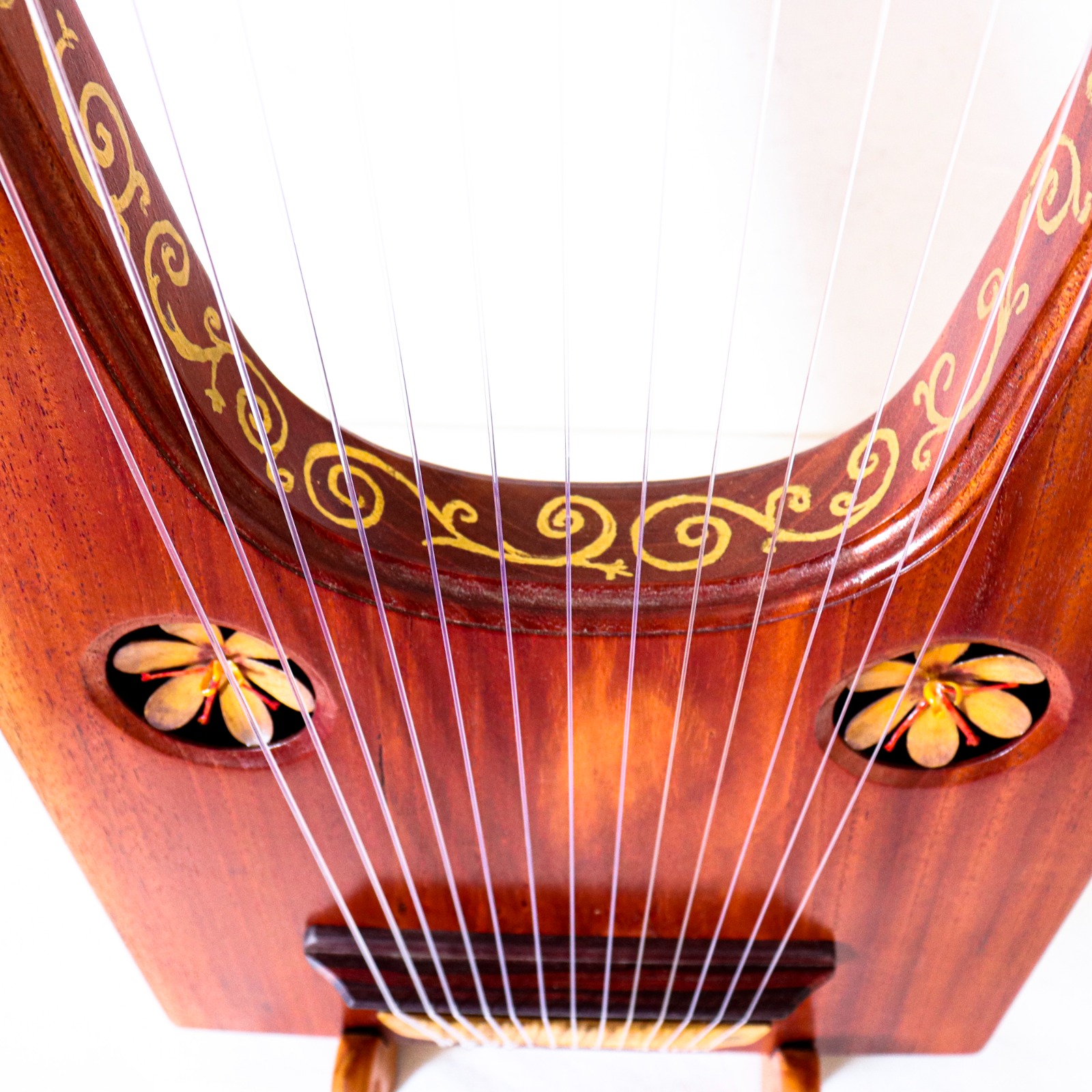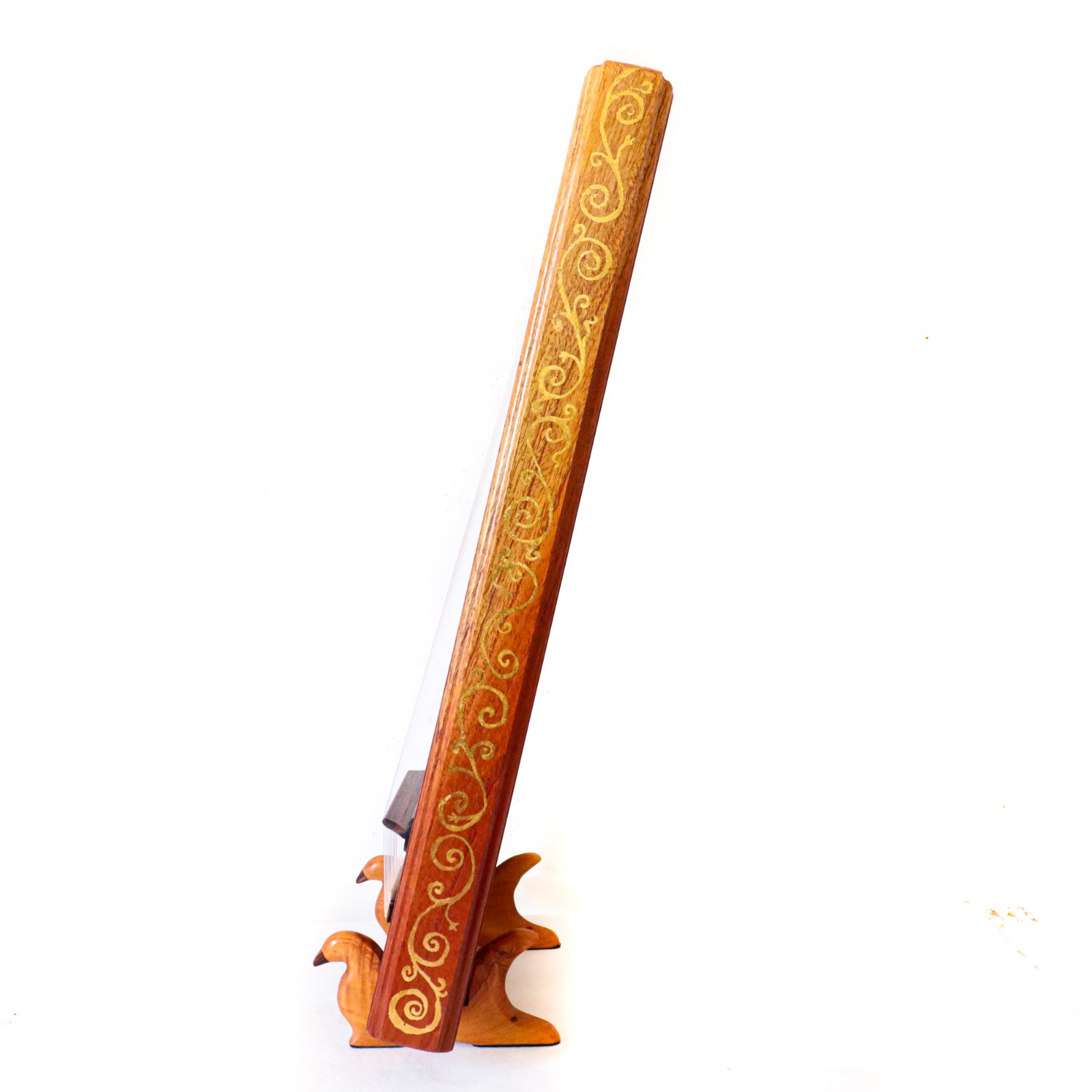So, I was wandering around the British Museum the other day, and came across a couple of fascinating instruments I hadn’t seen before. I thought they’d make an interesting addition to this old thread!
I was originally going to post some pictures I took myself. However, there’s an image on Wikipedia that’s so much better than my attempts, and I thought it would be best to use that instead. So, here’s a picture of these two instruments, taken by Osama Shukir Muhammed Amin FRCP(Glasg):
This image shows two lyres, found at the Royal Cemetery in the ruins of Ur, dating from about 2600BC. It’s hard to stress just how early this is. This is nearly *2000 years* before Homer, and centuries before the Minoans built their first palaces!
The thing I find so striking about these instruments is that they’re *huge*. Thankfully, the person in the picture above helps to give an idea of scale. Both lyres are around 1m tall! That’s much, much larger than the traditional dimensions of the classical Greek lyre! They both contain large amounts of metal, too, so these instruments would be *heavy*. And yet, remarkably, murals from the period show that they were simply held in the hand when they were played. These musicians would have had to be strong and dextrous, I think!

Interestingly, all the instruments from this set are decorated by bulls!
Here’s an informative video which demonstrates how a lyre like this might have sounded. The instrument here is a replica, but it’s enough to give a rough idea! The metallic frame gives the instrument quite a distinctive colour:
I was thinking about this, and started to wonder what sorts of instruments Asterion might have played in his lifetime. Feel free to ignore the rambling theorising below!
It’s only really possible to guess what instruments Asterion would have been familiar with if we know roughly when he lived. It’s possible some dates have already been given – if so, I’m sorry for being forgetful! – but here’s some crude guesswork. We know that Asterion knows Linear A well, but not Linear B. Thankfully, that helps us to tie things down pretty neatly. From archeological records, we know Linear A was only widely used from about 1625BC to about 1450BC. That’s a pretty narrow window. So we should be able to place Asterion somewhere within this two century gap! Given he’s at least aware of Linear B, he’s probably closer to the 1450BC end – but probably not pushing right up against that boundary.
But there might be a problem here, at least so far as lyres go. The earliest record we have of a classical Greek lyre is a Minoan mural on the Greek mainland – which is good! – but it only dates to about 1400BC. That’s ever so slightly later then the Linear A period. In other words, there’s no evidence that classical lyres were used while Linear A was also in popular use. So, if Asterion speaks Linear A, then the historical record suggests that he might have slightly *predated* the Greek lyre. At least, when he was alive. Maybe he picked the instrument up later, in the underworld? Could his childhood lyre have been something else entirely?
If Asterion played something different during his physical lifetime, what might that have been? Well, even in his relatively late period of Minoan history, the Minoans would presumably have been powerful maritime traders. Asterion lived before the sacking of Troy, so Crete would have had a powerful trading partner close by. And the Trojan borders covered much of the distance from Crete, in the west, to the Babylonian Empire, in the east. So it’s a possibility – albeit it a shaky one – that Babylonian instruments could have made it all the way to the Minoans.
So perhaps Asterion would have been familiar with huge lyres like these after all?
Of course, there’s a bundle of problems with this theory. We don’t see big lyres during this period *either*, so my earlier argument cuts both ways. And Asterion clearly *does* know about classical lyres! As much as I’d want to argue he might have picked that up in Hades, I can’t really justify that. Asterion pretty much contradicts that himself.
Still, I rather like the idea that both types of lyres might have been competing in the Crete of Asterion’s day. Maybe he actually learned on both sorts of instruments, but eventually ended up preferring the newer Greek style?
Anyway, sorry for the theory ramble!



